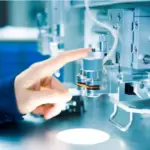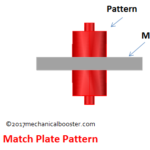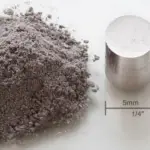
Sheet metal fabrication techniques are significantly enhancing architectural capabilities, allowing hard metals to assume complex and fluid forms. This evolution extends beyond mere construction into the realm of turning conceptual designs into robust, tangible structures. It’s about precision, innovation, and redefining skylines.
As we delve into these methods, we see that each bend and cut in metal is a step towards futuristic architecture. These techniques are crafting not just buildings but the very future of design, blending durability with aesthetic appeal. Join in understanding how these advanced methods are reshaping our world, one precise piece of metal at a time.
Basics of Sheet Metal Fabrication
Sheet metal fabrication is a practical and essential process used to transform flat sheets of metal into functional three-dimensional products. It involves a variety of techniques such as cutting, bending, welding, and finishing to create components for industries ranging from automotive to construction. In custom sheet metal fabrication, these processes are tailored to meet specific design requirements, ensuring that each piece meets exacting standards of size, shape, and functionality. Precision in cutting ensures accurate dimensions, bending shapes the metal into desired forms, welding joins pieces securely, and finishing enhances durability and aesthetics. This hands-on craft demands not only technical skills and attention to detail but also an understanding of how each piece fits within the larger context of the project at hand.
Historical Context of Sheet Metal in Architecture
Sheet metal has been a practical and versatile material in architecture for centuries, evolving from basic roofing to complex design elements in iconic structures. Its role in architecture is evident in the durability and design flexibility it has provided in historical landmarks, such as the Eiffel Tower. These structures demonstrate the material’s capability for both strength and intricate design, influencing contemporary architectural practices. Today, sheet metal continues to be valued for its adaptability, efficiency, and cost-effectiveness, making it a staple in both traditional and modern architectural designs. Its enduring presence in the field underscores its fundamental role in building and design innovation.
Advanced Fabrication Techniques in Architecture
Advanced fabrication techniques in architecture represent a fusion of tradition and innovation, driving the evolution of building design. This section explores cutting-edge methods that expand creative boundaries, enhance structural integrity, and streamline construction, marking a new era of architectural sophistication and efficiency.
Laser Cutting
Laser cutting stands as a revolutionary technique in the architectural field, offering a high level of precision and versatility in shaping materials. This technology utilizes intense beams of light to cut through metal sheets, allowing for intricate patterns and detailed work that were previously unimaginable.
It’s not just about aesthetics; laser cutting ensures accuracy and repeatability, which are crucial for structural components and decorative elements alike. The process is fast, efficient, and highly adaptable, making it an invaluable tool for architects and builders aiming to push the boundaries of design and construction. Whether creating complex façades, ornamental features, or precise fittings, laser cutting is transforming the way architects conceive and implement their visions.
Waterjet Cutting
Waterjet cutting is a versatile and precise fabrication technique widely utilized in architecture for cutting a variety of materials, including metal, glass, stone, and composites. It employs a high-pressure stream of water, often mixed with abrasive particles, to cut materials with accuracy and a smooth finish.
This method is particularly valuable in architectural applications for creating intricate designs, custom fittings, and detailed inlays. It’s favored for its ability to cut without inducing heat or structural changes in the material, ensuring the integrity and aesthetic quality of architectural components. As a cold-cutting process, it’s also ideal for materials sensitive to high temperatures, making it a practical choice for diverse architectural needs.
Precision Forming
Precision forming is a cornerstone in modern architecture, leveraging hydraulic presses and advanced tooling to mold sheet metal into complex shapes and designs. This technique allows for the creation of smooth curves, sharp angles, and detailed geometries with remarkable accuracy. It’s particularly valuable for customized façade elements, structural supports, and decorative features. The repeatability and efficiency of precision forming make it indispensable for projects requiring uniformity and detail across multiple components.
As a result, architects and engineers can push the boundaries of design, turning imaginative concepts into tangible structures that captivate and inspire. By expanding the architectural vocabulary through varied forms and textures, precision forming is redefining the possibilities of structural and aesthetic design in the built environment.
CNC Punching
CNC punching, a staple in architectural fabrication, offers precision and efficiency in creating detailed components for building designs. Using Computer Numerical Control (CNC), this method meticulously punches holes and shapes into metal, plastic, or composite materials. It’s particularly valuable for mass-producing consistent patterns in facades, decorative panels, or structural elements.
CNC punching is celebrated for its speed, reducing production time significantly, while its versatility accommodates custom designs, making it ideal for both standardized and innovative architectural projects. As a cost-effective and precise technique, it enhances the aesthetic appeal and functionality of architectural structures, allowing for complex, repeatable, and high-quality design elements that contribute to the modern built environment.

The Aesthetic Appeal of Fabricated Sheet Metal in Architecture
Sheet metal fabrication melds resilience with artistry, transforming architecture into dynamic forms. It elevates structures with its modern aesthetic and interactive play of light, inviting innovative designs that blend functionality with visual appeal. Welcome to a new era of architectural creativity and sophistication.
Texture
Sheet metal offers a versatile canvas, ripe for experimentation with textures, ranging from polished elegance to rugged industrial aesthetics. These textures imbue architectural elements with character, eliciting emotions and narratives through touch and sight.
Colors
Through various finishing techniques, sheet metal can don an array of colors. Be it vibrant, muted, or striking hues, architects wield the power to infuse their designs with a kaleidoscope of colors, harmonizing structures with their surroundings.
Finishes
Sheet metal’s versatility extends to its finishes, whether matte, glossy, or metallic. These finishes play with light and shadow, adding depth and sophistication to architectural elements, and turning them into dynamic visual spectacles.
Conclusion
In conclusion, sheet metal fabrication remains a vital component in modern architecture, marrying tradition with innovation. Its versatility and adaptability make it indispensable for both structural and aesthetic purposes. As technology advances, so too does the potential of sheet metal to contribute to sustainable, efficient, and visually impressive architectural designs.









